Can lavender grow in pots? The answer is a resounding yes! In this post, we’ll explore everything you need to know about cultivating lavender in containers, including the ideal varieties, container selection, soil requirements, watering needs, sunlight preferences, and essential care tips.
Why Grow Lavender in Pots?
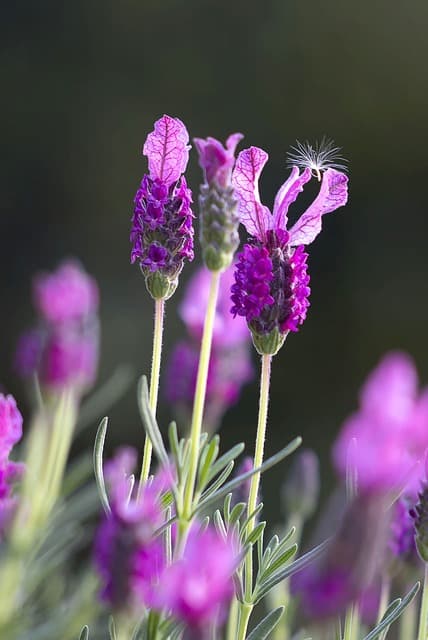
Growing lavender in pots offers several advantages. For one, it provides flexibility in placement; you can easily move your pots to catch the sun’s rays or protect them from adverse weather conditions. Container gardening also enables those with limited garden space to enjoy this aromatic plant. Moreover, growing lavender in pots can help prevent common issues like root rot, which is more prevalent in garden beds with heavy soil that lacks drainage. Here are several compelling reasons to grow lavender in pots:
Mobility: You can shift your pots to optimize sun exposure, allow for seasonal changes, or create temporary arrangements for outdoor events.
Space Efficiency: Container gardening is perfect for those living in apartments or homes without an expansive garden. Small balconies or patios can be transformed into fragrant havens.
Soil Control: You can tailor your soil mix to suit lavender’s needs, ensuring well-draining conditions that promote healthy growth.
Pest Management: Keeping lavender in pots can help reduce pest infestations since the roots are less exposed to soil-borne pests and diseases.
Stunning Aesthetics: Potted lavender can serve as attractive accents in your outdoor or indoor decor, adding color and fragrance without overwhelming the space.
Choosing the Right Pot for Lavender
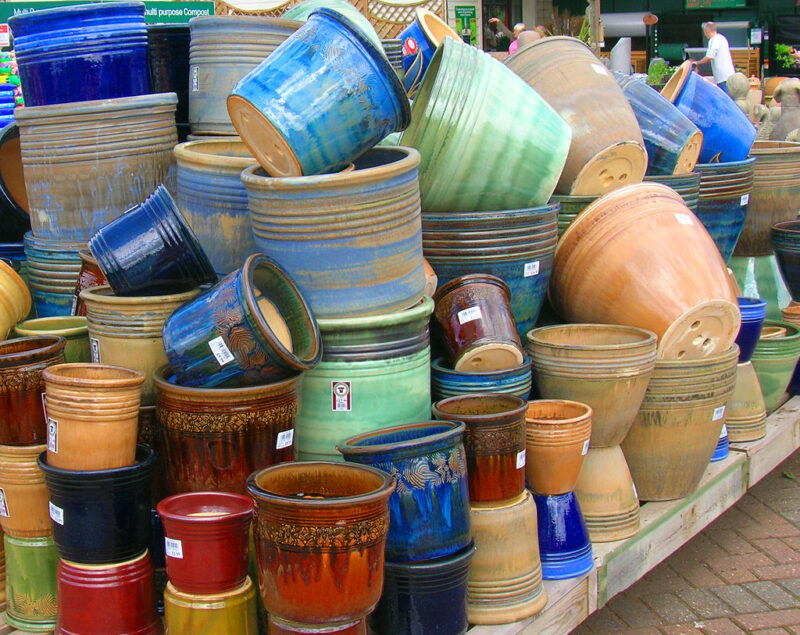
Selecting the right pot is crucial for the healthy growth of lavender. Here are some factors to consider:
Size Matters
Opt for a pot that is at least 12 inches in diameter. Lavender roots spread outwards rather than downwards, so a wider pot is beneficial. Ensure the pot is deep enough to accommodate the roots while allowing for sufficient drainage.
Material Considerations
Terracotta and ceramic pots are excellent choices for lavender. Terracotta is porous, allowing excess moisture to evaporate, which is essential for preventing root rot. Ensure the material is sturdy and suitable for outdoor use if you plan to keep your lavender outside.
Drainage Holes
Proper drainage is non-negotiable when it comes to growing lavender. Look for pots with adequate drainage holes to allow excess water to escape. Overly wet roots can lead to root rot, which is detrimental to your lavender plants.
The Perfect Soil for Lavender Potting

Lavender thrives in well-draining soil. Here are some specific recommendations for crafting the ideal mix:
Soil Composition
A standard potting mix combined with an equal part of sand and perlite offers a great structure for lavender. This blend ensures aeration while maintaining essential nutrients for growth. If you prefer to purchase soil, look for specialized mixes designed for cacti or Mediterranean plants, as they typically offer the drainage qualities that lavender craves.
pH Levels
Lavender prefers slightly alkaline soil with a pH between 6.5 and 7.5. Conducting a soil test can help determine the pH level. To amend acidic soil, consider adding garden lime to raise the pH; conversely, to lower it, you can use elemental sulfur.
Planting Lavender in Pots: Step-by-Step
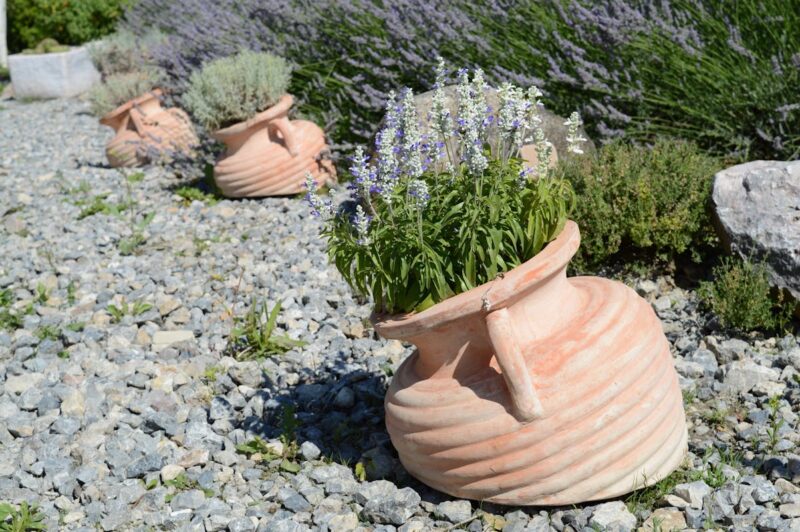
Once you’ve gathered your materials, it’s time to plant your lavender. Here’s a detailed guide to getting started:
Select Healthy Plants: When purchasing lavender, choose healthy specimens with vibrant leaves and no signs of pests or disease.
Prepare Your Pot: Before planting, fill the bottom of your pot with a layer of small stones or gravel to enhance drainage, which is especially necessary if your chosen pot does not have ample drainage holes.
Fill with Soil: Add your well-draining soil mix up to about two-thirds of the pot’s height.
Planting the Lavender: Remove the lavender plant from its nursery pot gently. If roots appear tightly wrapped, loosen them slightly to encourage outward growth. Place the lavender plant in the center of your pot, making sure the top of the root ball is level with the top of the soil. Fill in around it with more soil.
Watering the Plant: After planting, water the lavender thoroughly until you see excess water drain from the bottom. This initial watering helps settle the soil around the roots.
Mulching: Adding a small layer of gravel or decorative stones on the top can also help retain moisture whilst preventing weeds.
Lavender Care in Pots
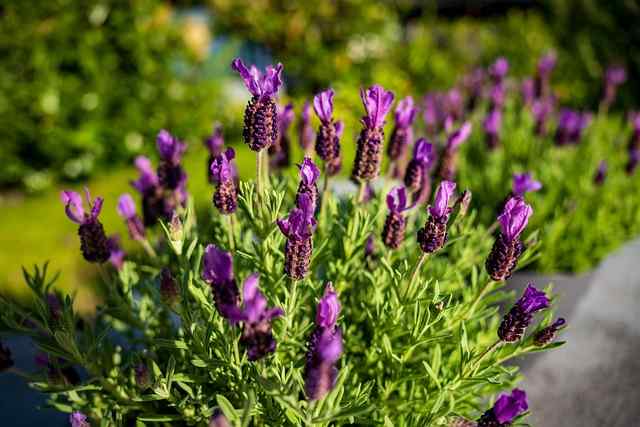
Keeping your potted lavender healthy requires attention to several key care factors:
Watering Rhythm
Lavender plants need a balanced watering routine. Allow the top inch or two of soil to dry out between watering sessions. In general, you’ll want to water more frequently during hot spells and reduce watering during winter months when the plant is dormant.
Sunlight Exposure
Lavender thrives in full sun, requiring at least six to eight hours of sunlight daily. Placing your pots in a south-facing location ensures maximum exposure. If you’re growing lavender indoors, a bright, sunny window is essential.
Fertilization
Lavender requires minimal fertilization compared to other plants. In fact, too much fertilizer can harm your lavender, leading to excess foliage growth at the expense of flowers. Consider using a diluted, balanced, slow-release fertilizer in early spring. If you’re using a rich potting mix, you may not need to fertilize at all.
Pruning and Maintenance
Pruning is an essential step in maintaining healthy lavender plants. The best time to prune lavender is in the early spring before new growth begins. You can trim the plant back by about one-third to encourage bushy growth and promote flowering. Regularly removing spent flowers (deadheading) will also encourage the plant to produce more blooms throughout the growing season.
Pest and Disease Management
While lavender is generally resistant to pests and diseases, keeping an eye out for issues such as aphids or powdery mildew ensures your plant remains healthy. If you notice any pest infestations, consider using insecticidal soap or neem oil. Good air circulation and proper watering can help prevent diseases.
Seasonal Considerations for Potted Lavender

As with any outdoor plant, lavender has specific seasonal care requirements. Here’s what you need to keep in mind for each season:
Spring
As the weather warms up, your lavender will begin to emerge from dormancy. This is the perfect time to prune and remove any dead growth. Monitor watering levels closely, as the plant will begin to absorb more water now that it’s growing actively.
Summer
Summer is when lavender shines in all its glory. During this season, be vigilant about watering as needed. If you live in an exceptionally hot area, consider moving potted lavender to a location where it gets morning sunlight but is shielded from the harsh afternoon sun. Also, ensure you check for pests regularly.
Autumn
As temperatures cool down, your lavender will slow its growth. This season is a good time for a light prune after the last blooms fade. Reduce watering frequency as the plant requires less moisture.
Winter
In winter, your potted lavender will go dormant. If you live in a region with freezing temperatures, bring the pots indoors to protect the plants. A cool room with bright indirect light is ideal. Ensure the soil remains slightly moist but avoid overwatering, as the plant requires less moisture during dormancy.
Troubleshooting Common Issues
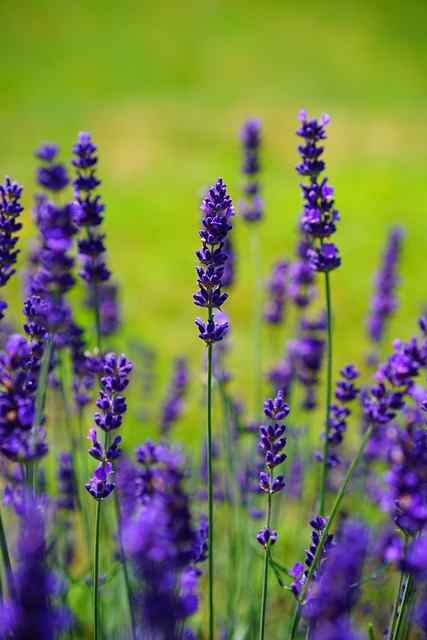
Lavender is a hardy plant, but issues can arise. Here’s how to troubleshoot some common problems:
Leggy Growth: If your lavender appears leggy or overgrown with little flower production, it could be a sign of insufficient sunlight. Ensure your plant is getting enough direct sunlight daily.
Yellowing Leaves: This is often a sign of overwatering or poor drainage. Check your watering habits and ensure your pot has adequate drainage.
Failure to Bloom: If your lavender fails to produce blooms, it may need more sunlight, or it could be too nitrogen-rich a soil mix. Evaluate your fertilizer usage and adjust accordingly.
Root Rot: If you suspect your lavender has root rot (usually indicated by wilting despite moist soil), carefully remove the plant from the pot. Trim away any blackened or mushy roots, then repot in fresh, well-draining soil.
Conclusion
Growing lavender in pots is an enjoyable and rewarding experience, perfect for beginners and seasoned gardeners alike. With the right pot, soil, sunlight, and care, you can enjoy lush blooms and delightful fragrance right in your home or garden. Not only does lavender provide aesthetic beauty, but it also offers culinary uses, essential oil extraction, and a wonderful sanctuary for pollinators.





